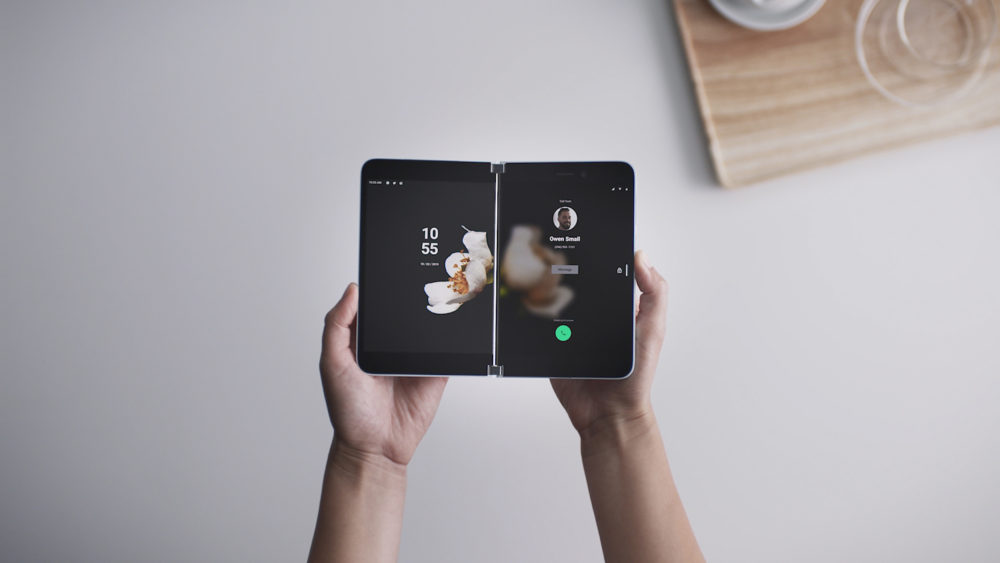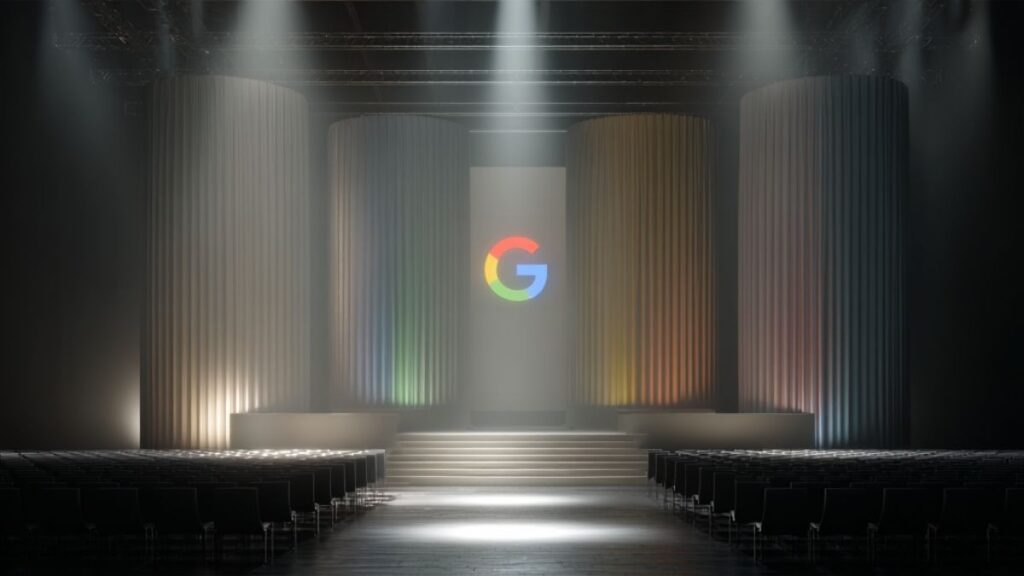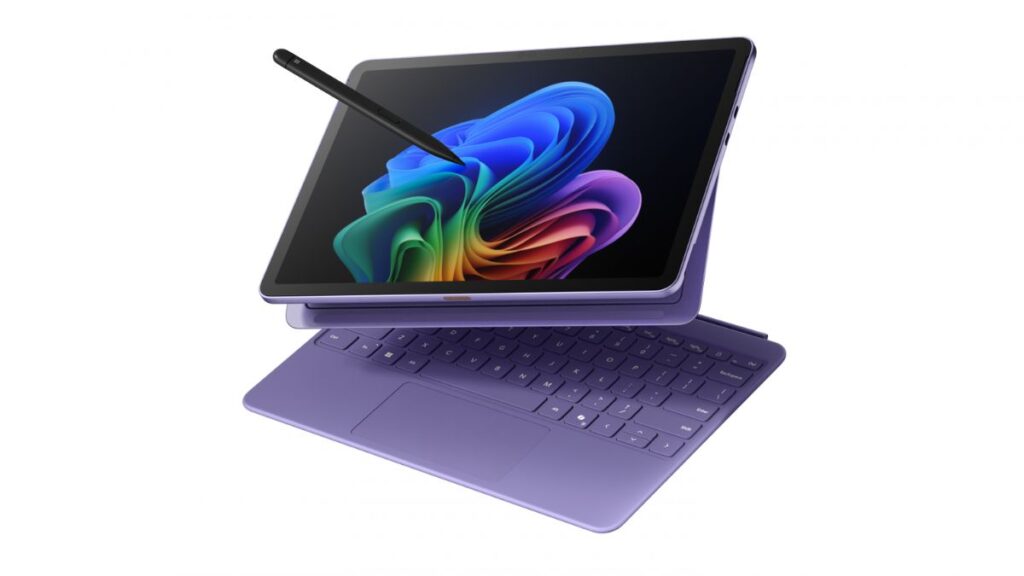Foldable phones are now a thing, and both Microsoft and Samsung are chasing this opportunity in a reasonable effort to take even more market share from Apple. Samsung Galaxy Fold is arguably on its second version, and the Surface Duo phone’s release is still around a year out. As a result, we’ll mostly focus on both companies’ approaches to the foldable screen and why one approach may be better, for a phone anyway, than the other.
Let’s take each in turn.
Samsung Galaxy Fold
The Samsung Fold uses two displays, the featured foldable display with a secondary notification display that sits on the outside of the device. The main display is a Dynamic AMOLED capacitive touchscreen with 16M colors, has an unfolded size of 7.3-inches, and a resolution 1536 x 2152 pixels. The secondary display is 4.6-inches, Super AMOLED with Gorilla Glass, and it has a resolution of 720 x 1680 pixels.
The phone uses the top of the line Qualcomm SDM855 solution with eight cores and the Adrino 640 graphics subsystem. The weight is heavy, for a phone, at 263g.
The Galaxy Fold is priced around $2K—or more expensive than most are currently willing to pay for a smartphone.
Microsoft Surface Duo
We know less about this phone, and it is still in prototype form. The Microsoft Surface Duo has two Gorilla Glass displays on the inside of the device and no secondary display on the outside. Each display is 5.6-inches and the phone unfolds to an 8.3-inch tablet or one inch larger than the Samsung. Now we immediately jump to guesses because Microsoft hasn’t yet released the specs. Microsoft tends to favor their Pixel Sense spec for displays, which is 2880×1920 pixels.
The prototype phone used an identical Qualcomm 855 solution, but this will likely change before the release. The Surface Duo weight should be in-line with the Samsung because of fewer features (one less camera) but offset by two Gorilla glass-covered screens that are larger.
The estimated price for this phone is between $1K and $1.5K, and—I expect–they’ll attempt to undercut iPhone pricing as a penetration strategy, suggesting that, with incentives, it could be much less. (Ideal target price for a penetration product would be sub-$750 and this phone could hit that price point under a penetration pricing strategy).
Comparing The Efforts
The phones, while seemingly very similar, are very different. The Samsung Galaxy Fold is a true “Halo” product, which means it is a technology showcase intended to drive interest in the brand but not sell much volume. It is a true early adopter device and is arguably the most fragile phone currently in market at any price thanks to the plastic main screen.
The Surface Duo is a market penetration phone, which means it will have a far tighter focus on keeping the price down. It also has a unique business focus, which is a segment largely abandoned by everyone, but the BlackBerry-branded phones with keyboards like the Key2. As a result, the phone is more robust, and it should have a sharply lower cost to build. For instance, it only has one rather than two cameras but, by folding the screen over, you can get a similar experience and without the resolution degradation that typically occurs when you switch cameras.
So Which Is Better?
Given the two phones have very different targets, comparing them to each other is pointless. However, we can take them against their goals. The Samsung Galaxy Fold is, on the surface, a great Halo product, but Halo products have to carry the brand, and the screen technology they are using is extremely fragile, which should lead to excessive wear and unfavorable reviews as the device ages. This kind of tradeoff is not atypical of Halo products, but it can damage the brand and reduce advocacy for the line—creating risk. Finally, the Galaxy line is known for having a stylus and a tablet-like phone that can’t use one (and this one can’t because of the plastic screen) is an unfortunate tradeoff.
The Surface Duo seems to more tightly anticipate its use case with more attractive pricing and a more robust design. The cost-cutting is reasonable and the need to have a robust product that works is critical to the segment they are targeting. The decisions here appear in-line as well. However, a penetration product requires a massive marketing commitment and solid execution, which is something Microsoft hasn’t done for some time. Microsoft has a history of under-resourcing the demand generation for products like this, which is largely how they failed with the Zune and the Windows Phone.
While these two phones have different strategic goals, both also target Apple in different ways. Samsung is showcasing that Apple is no longer the design leader, but to make that stick they need to get to higher volumes than the Fold is likely to generate due to its price and fragility. The Surface line was built to target Apple, and the business focus of the Duo and more competitive prices should allow the firm to gain a beachhead. Apple’s marketing has degraded so much that they don’t stand out anymore, but, as the defender, their requirement is far lower than Microsoft or Samsung’s here. So, they are vulnerable but will defend, and while the Surface will pull interest, without substantial marketing, it may not pull current Apple users in high volume. Microsoft’s device is stronger against the requirement than Samsung’s; however, it also comes with a higher need for demand generation and penetration marketing, and without seeing Microsoft’s budget and plan, and knowing their past weakness here, they have the higher probability of failure.
Wrapping Up: Change Is In The Wind
However, there is a collective impact from both efforts that will drive interest in foldable screens, which may catch Apple napping. Success, in terms of high volume sales, for either phone is far from certain. The Samsung—as a Halo product–doesn’t have that as a goal, and the belief that Microsoft may not have the will or skills to execute a demand generation campaign anymore weakens the odds for the Surface Duo.
But the concept of foldable screens is gaining traction, and having more devices that use this approach will further validate these designs to users. The Microsoft design, in particular, harkens back to their “Really” campaign, which would have been far more successful had they run it longer. So, regardless of whether either of these phones individually become successes, their collective power to increase the viability of foldable solutions is impressively strong.
Were both phones in market, I’d favor the Microsoft design, but you can’t buy what isn’t on the shelf, so we’ll revisit this when it ships. Too early to call a winner, but one thing should be clear, Apple no longer enjoys design leadership and given the departure of their lead designer, that isn’t much of a surprise now.




Comments are closed.